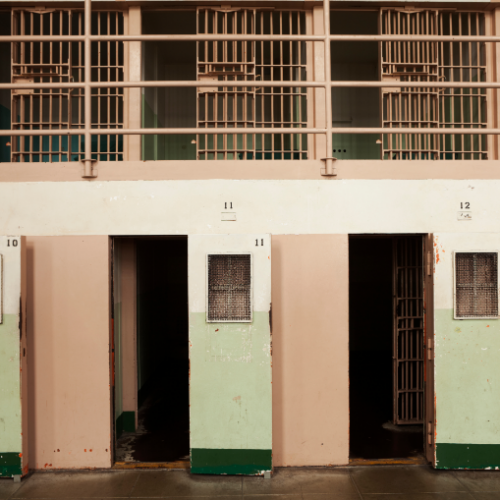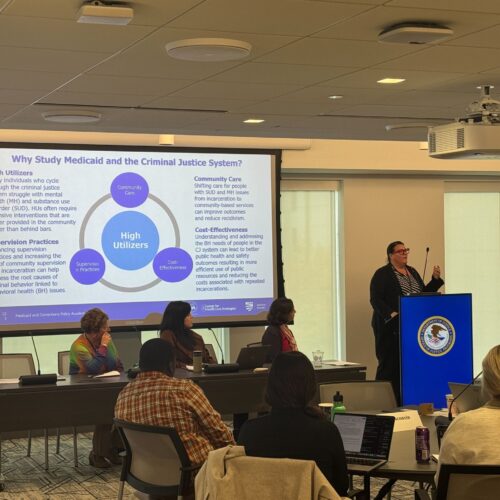A Capitol Hill Briefing on States’ Innovations in Juvenile Justice
On July 30, 2013, U.S. Senator Chris Murphy (D-CT) hosted a briefing called “States’ Innovations in Juvenile Justice: Investing in Better Outcomes for Our Communities.”
Moderated by Michael Thompson, Director of the Council of State Governments Justice Center, state leaders from Connecticut, Texas, and Ohio, and federal juvenile justice leaders discussed recent bipartisan reforms that have improved outcomes for youth involved with the juvenile justice system and for youth who are removed from their schools for disciplinary reasons and at risk of becoming involved with the justice system. During the briefing, the following reforms were discussed:
- Connecticut: Mike Lawlor, the Under Secretary for Criminal Justice Policy and Planning in Connecticut, described legislation that greatly reduced the number of youth confined in juvenile justice facilities, developed new community-based supervision and treatment programs, and raised the age of juvenile court jurisdiction from 16 to 18.
- Texas: Texas State Senator John Whitmire detailed the passing of a new law prohibiting the use of confinement for youth adjudicated for misdemeanor offenses. He also discussed a new incentive program for counties to place youth in local evidence-based programs, rather than in state-operated correctional facilities. Texas also redirected $57.8 million that would have been used to house juveniles for misdemeanors in secure facilities to community-based programs.
- Ohio: The Honorable Linda Teodosio from the Summit County Juvenile Court in Ohio explained how the RECLAIM Ohio (Reasoned and Equitable Community and Local Alternatives to the Incarceration of Minors) funding initiative has expanded dispositional options for youth and community-based alternatives while creating financial incentives for counties to keep youth out of confinement. In FY 2012, these county subsidies for juvenile justice programs totaled approximately $47.3 million, serving 600 programs and 110,000 youth across Ohio.
- National: Office of Juvenile Justice and Delinquency Prevention Administrator Robert Listenbee described the federal government’s role in juvenile justice reform, including the recent publication of the latest research and tools for implementing evidence-based and developmentally appropriate policies and practices to guide state juvenile justice systems.
Panelists also focused on significant reforms in their states and at the local level that reduce the impact of harmful school discipline policies that push youth into the juvenile justice system. These reforms include reducing the number of exclusionary policies and school-based referrals to law enforcement. The three featured states have saved millions of dollars from reduced incarceration of youth and cut back on harmful, ineffective policies such as the over-confinement of youth for low-level offenses while improving outcomes for youth and keeping communities safe.
“In Connecticut, it costs about $14,000 a year to educate a student: it costs $270,000 a year to house a child in custody,” stated Senator Murphy. “In a time of tight budgets, it makes absolutely no sense to continue to house as many kids as we do in prisons when it costs about 10 percent of that amount to keep the kids in school and in communities. But we’re moving in the right direction. Over the last decade, about 10-15 states have figured out that there are steps to divert kids out of incarceration.”
By reinvesting funds back into other juvenile justice prevention and intervention practices proven to work, states can realize additional cost savings, reduce recidivism, and help youth become productive adults.
To watch the briefing, please click on the video below.
A positive school experience, where a child feels secure, is essential for their well-being. However, for many children…
Read More The Path to Statewide Community Crisis Response in New Jersey: A Community Advocate’s Perspective
Read More
The Path to Statewide Community Crisis Response in New Jersey: A Community Advocate’s Perspective
Read More
 Supporting Children of Incarcerated Parents: Reimagining School and Community Collaboration
Supporting Children of Incarcerated Parents: Reimagining School and Community Collaboration
A positive school experience, where a child feels secure, is essential for their well-being. However, for many children with incarcerated parents—one in 14 in the U.S.—school can feel far from safe due to stigma, trauma, and a lack of understanding.
Read More Bridging Communities and Correctional Systems: Q&A with CSG Justice Center Advisory Board Member Commissioner Nicholas Deml
Read More
Bridging Communities and Correctional Systems: Q&A with CSG Justice Center Advisory Board Member Commissioner Nicholas Deml
Read More
 Assigned to the Cloud Crew: The National Incarceration Association’s Hybrid Case Management for People with Behavioral Health Needs
Assigned to the Cloud Crew: The National Incarceration Association’s Hybrid Case Management for People with Behavioral Health Needs
When returning to their communities from criminal justice settings, people with behavioral health needs face barriers in accessing basic needs—including food, housing, employment, transportation, education, clothing, and substance use and mental health services—which increases their risk of experiencing a crisis.
Read More Meet the Medicaid and Corrections Policy Academy Mentor States
Meet the Medicaid and Corrections Policy Academy Mentor States
New Hampshire Department of Corrections Commissioner Helen Hanks presents at the Medicaid and Corrections Policy Academy in-person meeting.
Read More










